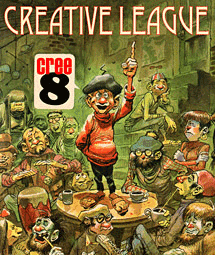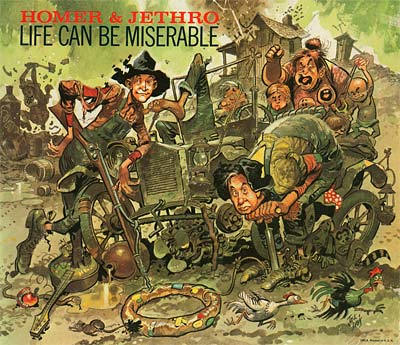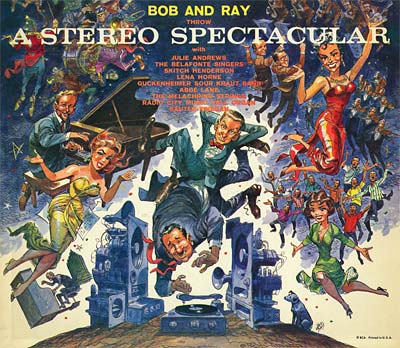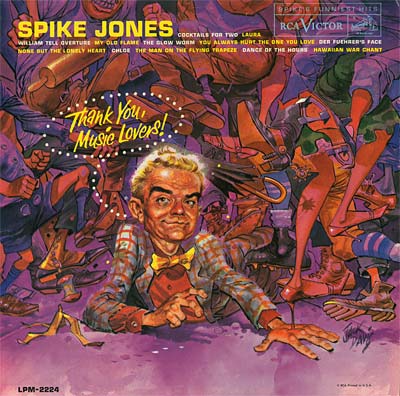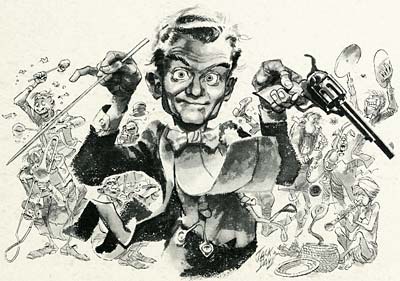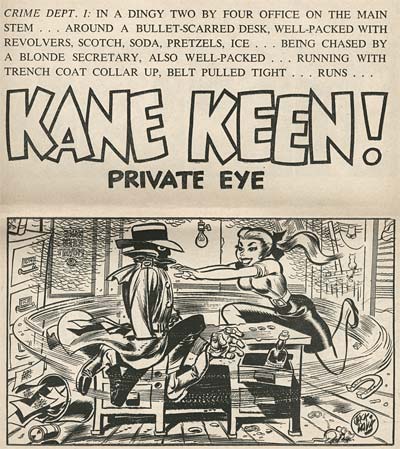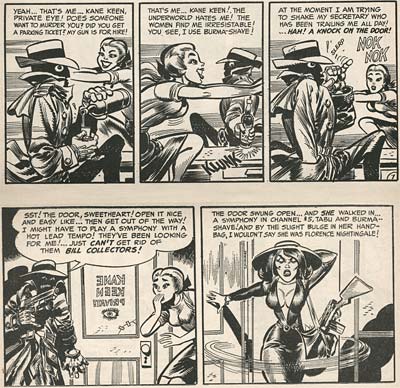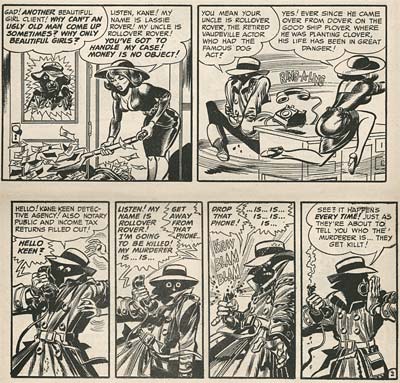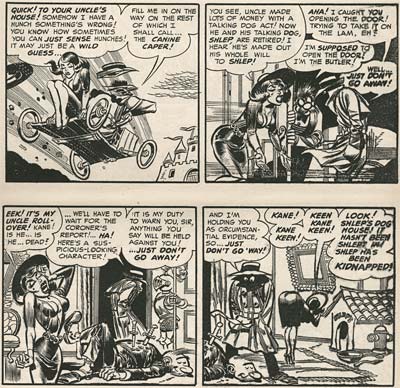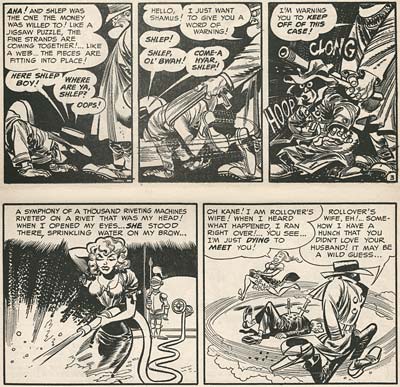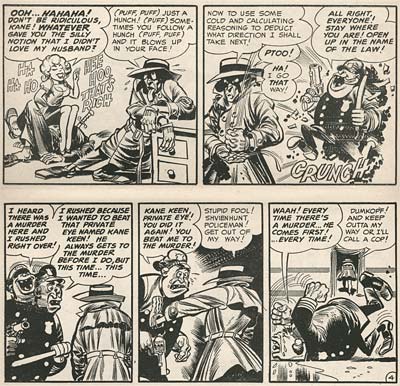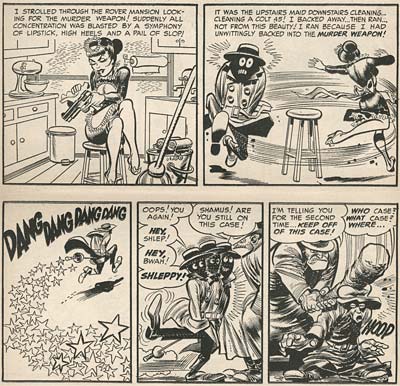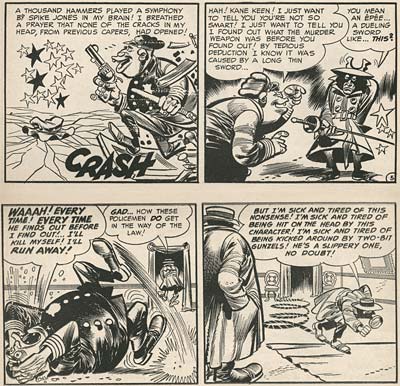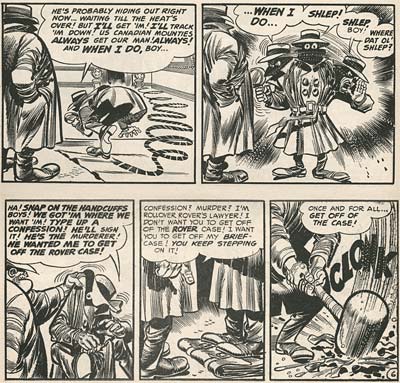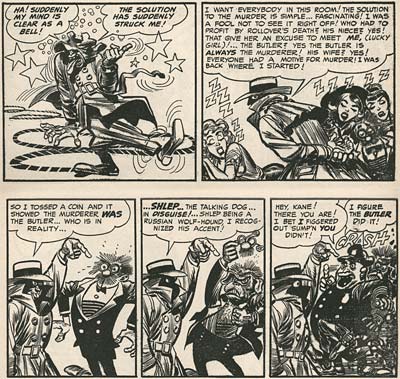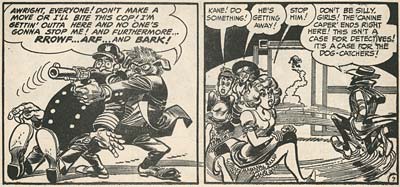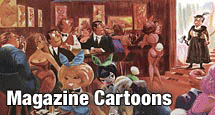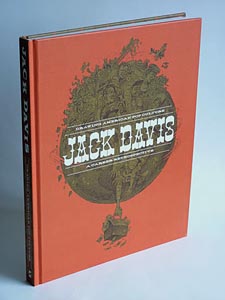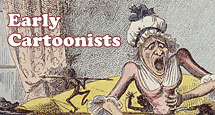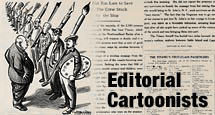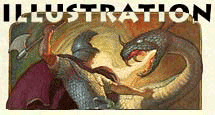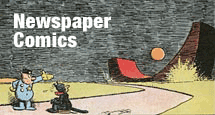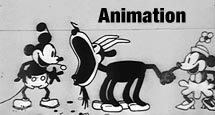TOO LATE! A new Reference Pack has been posted, and this one is gone. Grab the new RefPack before it disappears!

Every other month, Animation Resources shares a new Reference Pack with its members. They consist of e-books packed with high resolution scans video downloads of rare animated films set up for still frame study, as well as podcasts and documentaries— all designed to help you become a better artist. Make sure you download this Reference Pack before it’s updated. When it’s gone, it’s gone!
MEMBERS LOGIN To Download
JOIN TODAY To Access Members Only Content
The latest Animation Resources Reference Pack has been uploaded to the server. Here’s a quick overview of what you’ll find when you log in to the members only page…
PDF E-BOOK:
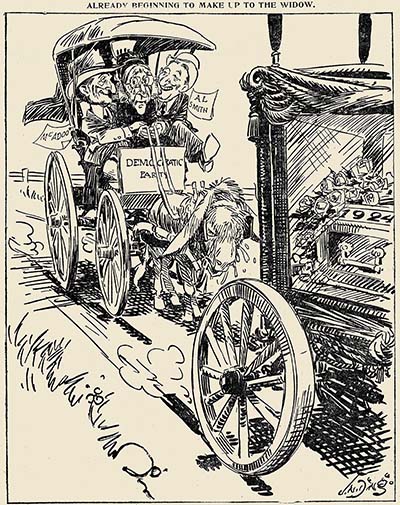
Ding Darling

Political Cartoons 1924-1926
Download this article
PLEASE NOTE: In 2016 this e-book was scheduled to be part of Reference Pack 012. It was pulled at the last minute because of a copyright claim. The work is now part of the Public Domain, so we are making it a part of this Reference Pack.
Jay Norwood Darling was born on October 21, 1876, in Norwood, Michigan. He enrolled in Yankton College in South Dakota studying medicine in 1894 but was expelled after taking a joy ride in the President’s carriage.
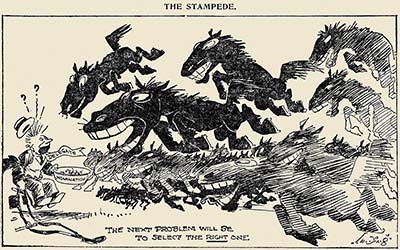
Darling went to work at the age of twenty-three as a cub reporter for the Sioux City Journal. While writing for the Journal, he continued to draw. He dabbled in photography and one day was sent to photograph an attorney to accompany a piece he had written. The attorney objected and chased Darling out of the courtroom. Darling substituted a drawing that he had already made of the lawyer, and the editor decided to publish it. It was so successful that Darling was engaged to do a series on Sioux City characters called “Local Snapshots” (1901-1902). At the end of 1906, at the age of thirty, Darling began his long career at the Des Moines Register and Leader (later the Des Moines Register). The editor, Gardner Cowles, gave Darling complete artistic and editorial freedom, only sometimes– and rarely– deciding not to publish a cartoon. Darling thrived in this atmosphere, and his reputation grew.
Ding Darling was one of the greatest editorial cartoonists in America. But he wasn’t just a cartoonist. His work for the conservation of migrating wildfowl led to a wildlife preserve in his name.
SD VIDEO:
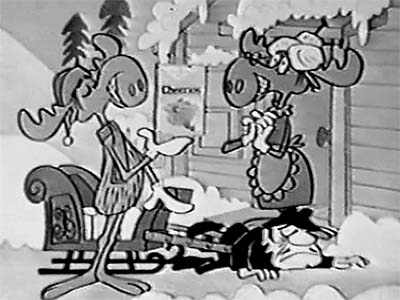
Jay Ward Commercial Reels

Rocky & Bullwinkle / Captain Crunch
When I was working with Bill Scott at ASIFA, we chatted about his career a bit. He was a storyboard artist at Warner Bros. and U.P.A, and he was a "jack of all trades" at Jay Ward Studios, producing, directing, writing and voicing characters. I asked him what was the most fun to work on, and he admitted that most people know him for his work on The Bullwinkle Show and George of the Jungle, but he enjoyed working on commercials the best of all. They had far fewer limitations due to budget or schedule. The work could all be done in-house. And every one was different.
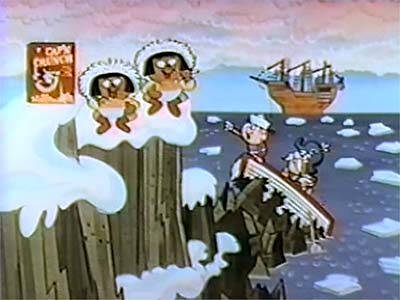
In this RefPack, Animation Resources is sharing reels of Rocky & Bullwinkle and Captain Crunch commercials. Take note of the format of these spots. They are quite different than most commercials today. They’re structured as little cartoons with a setup of a situation, a brief product shot acting as a commercial within the commercial, and a resolution of the story. The audience watches the commercials the same way they watch the shows they accompany. No one can tune them out, because they are self-contained and entertaining on their own.
MEMBERS LOGIN To Download
JOIN TODAY To Access Members Only Content
SD VIDEO:
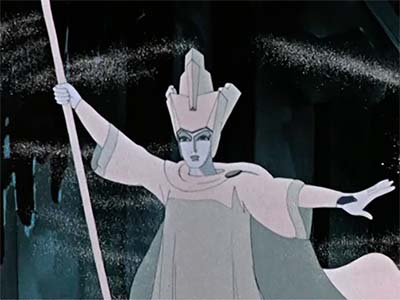
The Snow Queen

Lev Atamanov / Souyzmultfilm / Russia / 1957
Download this article
The Snow Queen is probably the most famous bit of Russian animation outside of the Soviet Union. It was Soyuzmultfilm’s ninth animated feature, released in 1957 to universal acclaim. The film was dubbed into German, French, Spanish, Italian, Finnish and Swedish, as well as English. This was unusual because the film was released during the height of the Cold War. In 1959 Vice-President Richard Nixon met with Soviet leader Nikita Krushchev at the American National Exhibition with the intention of lowering tensions between the two countries through cultural exchange. The theatrical distribution rights to The Snow Queen was sold to Universal Pictures for $30,000, the first time a Soviet film had been purchased for release in the United States.
Hayao Miyazaki cited The Snow Queen as his favorite animated feature, and one of his greatest inspirations. At the time of the film’s release, he was working at Toei and was unhappy with his job. He seriously considered leaving animation for another career. But a screening of The Snow Queen reinvigorated him and gave him new goals. In particular, it showed him how animation could be used for creating visual symbols and metaphors to put across thematic content. Miyazaki’s Princess Mononoke is his tribute to The Snow Queen. It shares many aspects with the Russian film.
SD VIDEO:
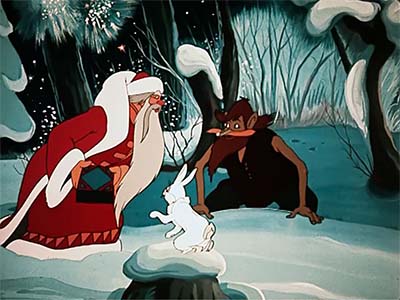
New Year Night

Olga Khodatayeva & Pyotr Nosov / Soyuzmultfilm / Russia / 1948
New Years Night was the first animated film made at Soyuzmultfilm in the years immediately following World War II. The directors, Olga Khodatayeva and Pyotr Nosov were already veteran animators, having begun work in the 1920s and 1930s. We presented Khodatayeva’s pioneering film "Interplanetary Revolution" (1924), her burlesque on Hitler, "Kino Circus" (1942), and "A Brave Little Deer" (1957) in earlier Reference Packs.
The simple story centers around an argument between Father Christmas and a Wood Goblin over which mode of transport is better… a magic carpet or an aeroplane. Naturally, Santa Claus wins the bet by delivering a Christmas tree by means of modern technology. There’s good use of rotoscoping as well as pure animation in this short, and the use of color is remarkable.
MEMBERS LOGIN To Download
JOIN TODAY To Access Members Only Content
SD VIDEO:
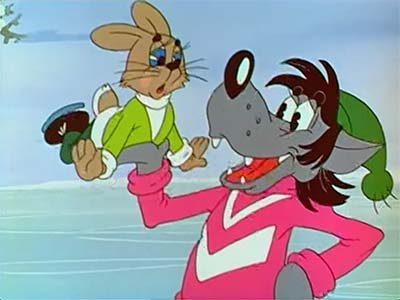
Well, Just You Wait Ep.07

Vyacheslav Kotyonochkin / Soyuzmultfilm, Russia / 1973
We continue the Russian Wolf and Rabbit cartoons with episode 08, “Ski Resort”.
Between 1969 and 2006, Soyuzmultfilm ended up making 22 episodes Wolf and Rabbit cartoons, and in a 2014 poll of audiences all over Russia, Well, Just You Wait! was voted the most popular cartoon series of all time by a landslide. Although the series resembles both Tom & Jerry and the Roadrunner and Coyote series, the director, Kotyonochkin claimed not to have ever seen any of these Hollywood cartoons until 1987 when his son got a video tape recorder and Western tapes began to be imported.
In these Russian cartoons, there’s almost no dialogue, and the action almost always occurs on screen. Static tableaux are rare, as are detailed backgrounds and “on model” drawings. These cartoons focus on expressive poses and movement, and save time and expense by avoiding the careful cleanup required for character model details and overlapping action. The theory here is, if it moves funny, it’s funny… and they are right about that.
SD VIDEO:
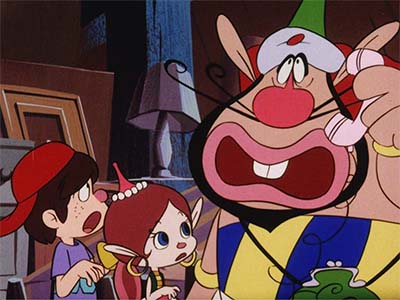
Hakushon Daimao Ep. 05 & 47

Hiroshi Sasagawa / Tatsunoko Productions / Japan / 1969
In the Fall of 1969, Tatusnoko Productions debuted Hakushon Daimao (The Genie Family) on Fuji TV in Japan. Tatsunoko had previously produced Space Ace and Speed Racer entirely in-house in their studio in Tokyo. Directed by veteran animation director, Hiroshi Sasagawa, the series ran for 52 episodes.
The show focuses on a boy named Kan who finds a mysterious old bottle. Inside the bottle is a bumbling genie named Hakushon and his daughter Akubi. When Kan sneezes, Hakushon is summoned, and when he yawns, Akubi appears. The genies grant wishes, but Hakushon often messes up his magic due to clumsiness, and Akubi cleverly twists the meaning of the words in the wish to produce unexpected results.
MEMBERS LOGIN To Download
JOIN TODAY To Access Members Only Content
SD VIDEO:

Shock Of The New Ep. 01 & 02

Robert Hughes / BBC / 1980
Download this article
In the first 18 years of the 20th century, the world changed more than in the previous 18 centuries. The rise of the machine age that led to the horrors of the First World War was unprecedented. Rapid change has continued since then. Uncertainty and progress continue to go hand in hand into an unknown future.
In the early 1980s, I happened to see a series on PBS that blew my mind. It was titled “Shock Of The New” and it was hosted by Time Magazine’s art critic, Robert Hughes. It told the story of modern art in a different way, organizing the episodes by the meaning of the art, instead of following a strict chronology. The concepts were illustrated not only by images of art, but with footage illustrating the societal upheaval that inspired it. Hughes travelled about 250,000 miles to film the places and people in the series and spent over three years producing the films and companion book. It is one of the greatest pieces of art criticism that has ever been produced.
ANALYSIS:
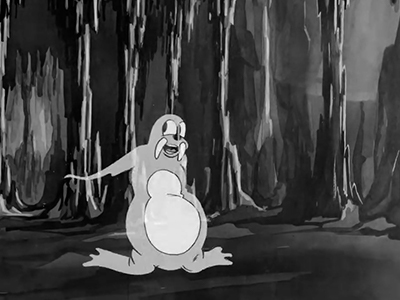
Solo Performance Pt. 1

Curated By David Eisman
Download this article
Sometimes in art, there comes a moment when a solo performer is able to take center-stage and rapt the audience’s attention for the few crucial moments it takes to demonstrate the mastery of their craft. This moment arises differently in different art forms. In a jazz concert, for instance, the conductor may allow for an extended period of solo play from a particularly talented musician, leading them to rhapsody and improvise to the astonished amazement of the crowd. In a dramatic film, the leading actor may have several minutes of uninterrupted screen-time wherein they occupy the frame with their presence, delivering powerful lines in stirring monologues.
Solo performances can occur in animation as well, though the mechanisms by which that performance occurs are wholly different from the aforementioned two examples. In an animated solo performance, the animator is generating every single action and emotion of the character that occupies the frame – the animated character is not real, and thus, unlike the jazz player or dramatic film actor, does not have the ability to improvise and adapt. As such, in every animated solo performance, it is the animator acting through the pencil. But, crucially, it is not the actor acting as themselves – the solo performance must embody the soul of the character. Therefore, the movements and actions of the character must be in-line with their personality and behavior.
MEMBERS LOGIN To Download
JOIN TODAY To Access Members Only Content

As a special thank you to our annual General and Student members, we have created a special page where we will archive past Reference Packs. There will be a new rerun of a complete RefPack between the new ones.
ANNUAL MEMBER BONUS ARCHIVE

Available to Student and General Members
REFPACK030: October / November 2019
PDF E-BOOK:
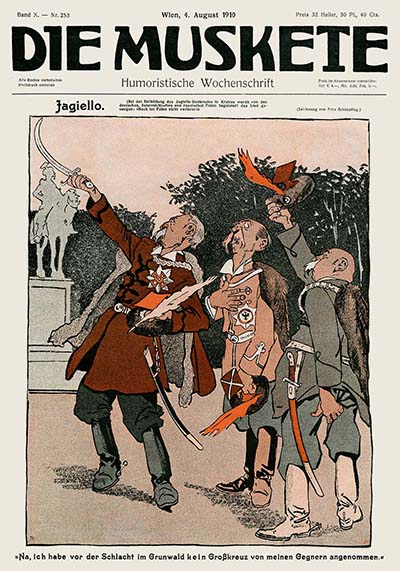
Die Muskete Volume Two

Vol. X Nos. 253-160(August-September 1910)
During the 19th century, society had a totally different relationship with cartoons than we do today. Beginning with artists like James Gillray and George Cruickshank in early decades of the century, cartoons were seen as serious business. They crystalized the image of the rich and powerful in the minds of the masses, and even Kings and religious leaders were forced to take notice of their impact. The pen truly had become “mightier than the sword”.
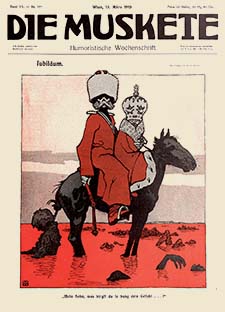
 With the dawn of the 20th century, the lives of people were changing. The modern world was emerging, and with it came pressures brought on by technology, new forms of government, colonialism and war. The gloves were off. Cartoonists no longer limited their satire to Kings and religious leaders. They wielded their power to satirize by skewering everyone and everything around them– religion, ethnicity, the rich as well as the poor, and the power that the government held over the public. Cartooning became a powerful tool for changing hearts and minds, as well as disseminating nationalistic propaganda. The conflicts that these new challenges created began building to a head, and it would eventually result in “The Great War”, World War I.
With the dawn of the 20th century, the lives of people were changing. The modern world was emerging, and with it came pressures brought on by technology, new forms of government, colonialism and war. The gloves were off. Cartoonists no longer limited their satire to Kings and religious leaders. They wielded their power to satirize by skewering everyone and everything around them– religion, ethnicity, the rich as well as the poor, and the power that the government held over the public. Cartooning became a powerful tool for changing hearts and minds, as well as disseminating nationalistic propaganda. The conflicts that these new challenges created began building to a head, and it would eventually result in “The Great War”, World War I.
Click to access the…
Annual Member Bonus Archive

Downloads expire after December 2024
DVD QUALITY VIDEO:
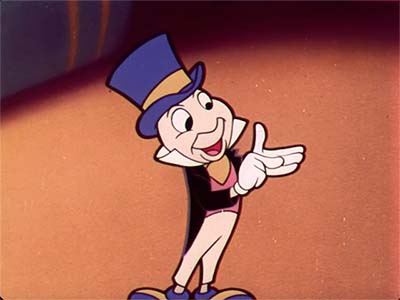
I’m No Fool
Disney / 1955-1956
Animation is not only an entertainment medium, it can also educate. When educational films are overly didactic and dense with content, they often fail to get the ideas across. But animation engages the audience and presents information in a clear symbolic way that remains in the mind long after the film is over. The Fleischers pioneered the idea of using animation to educate with their film “The Einstein Theory of Relativity” in 1923. During WWII, the United States War Department set up the Army Air Forces First Motion Picture Unit whose sole purpose was to create training films to educate soldiers on how to use equipment and how to navigate life in the armed forces.
The Disney Studios also contributed to the government’s wartime efforts in creating educational films. They produced training films for enlisted men, propaganda for audiences in the home front, and even a feature film, Victory Through Air Power. A great deal of research was done at the studio to find the best ways to use animation for education. They experimented with stylization to graphically represent complex subjects in a simple way to clearly communicate to the intended audience. They also evolved an efficient and bare-bones production process to reduce costs.
Click to access the…
Annual Member Bonus Archive

Downloads expire after December 2024
DVD QUALITY VIDEO:
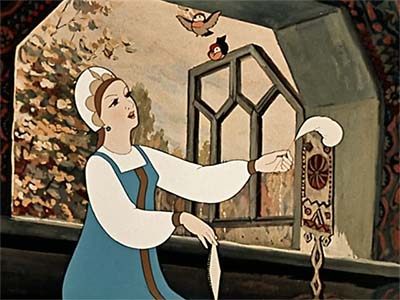
Dead Tsarevna & The Seven Bogatyrs

Ivan Ivanov-Vano / 1951
Although this film closely resembles the story of “Snow White and the Seven Dwarfs”, this adaptation is based on a Russian fairy tale about the Princess Tsarevna. The film closely follows the poem written in 1833 by Aleksandr Pushkin. If you are interested, there is a synopsis of the story at Wikipedia.
The director of this film, Ivan Ivanov-Vano began his career in animation in 1927 and made three dozen films over his half century career, most of which were based on Russian folk tales. Early on, he was heavily influenced by Disney, but his personal style developed and grew over his career. In 1947 he directed the first Russian animated feature film, The Humpbacked Horse; and he helped establish ASIFA (The International Animated Film Society) in 1961.
Click to access the…
Annual Member Bonus Archive

Downloads expire after December 2024
If you are currently on a quarterly membership plan, consider upgrading to an annual membership to get access to our bonus page with even more downloads. If you still have time on you quarterly membership when you upgrade to an annual membership, email us at…

membership@animationresources.org
…and we will credit your membership with the additional time. These bonus downloads expire after January 1st, 2025.
MEMBERS LOGIN To Download
JOIN TODAY To Access Members Only Content
Whew! That is an amazing collection of treasures! The most important information isn’t what you already know… It’s the information you should know about, but don’t know yet. We bring that to you every other month.
THIS IS JUST THE TIP OF THE ICEBERG!
Animation Resources has been sharing treasures from the Animation Archive with its members for over a decade. Every other month, our members get access to a downloadable Reference Pack, full of information, inspiration and animation. The RefPacks consist of e-books jam packed with high resolution scans of great art, still framable animated films from around the world, documentaries, podcasts, seminars and MORE! The best part is that all of this material has been selected and curated by our Board of professionals to aid you in your self study. Our goal is to help you be a greater artist. Why wouldn’t you want to be a member of a group like that?
Membership comes in three levels. General Members get access to a bi-monthly Reference Pack as well as a Bonus RefPack from past offerings in the in-between months. We offer a discounted Student Membership for full time students and educators. And if you want to try out being a member, there is a Quarterly Membership that runs for three months.
JOIN TODAY!
https://animationresources.org/membership/levels/
FREE SAMPLES!
Not Convinced Yet? Check out this SAMPLE REFERENCE PACK! It will give you a taste of what Animation Resources members get to download every other month! That’s 560 pages of great high resolution images and nearly an hour of rare animation available to everyone to download for FREE! https://animationresources.org/join-us-sample-reference-pack/
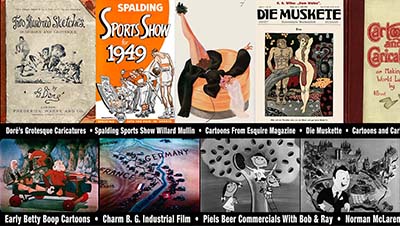

 Animation Resources depends on your contributions to support its projects. Even if you can’t afford to join our group right now, please click the button below to donate whatever you can afford using PayPal.
Animation Resources depends on your contributions to support its projects. Even if you can’t afford to join our group right now, please click the button below to donate whatever you can afford using PayPal.









 by
by 

![]()
![]() Animation Resources depends on your contributions to support its projects. Even if you can’t afford to join our group right now, please click the button below to donate whatever you can afford using PayPal.
Animation Resources depends on your contributions to support its projects. Even if you can’t afford to join our group right now, please click the button below to donate whatever you can afford using PayPal.




